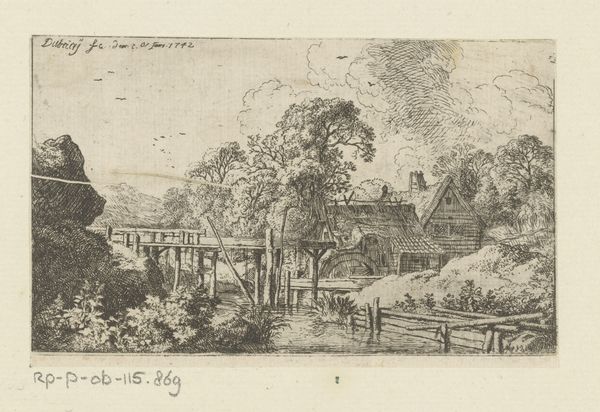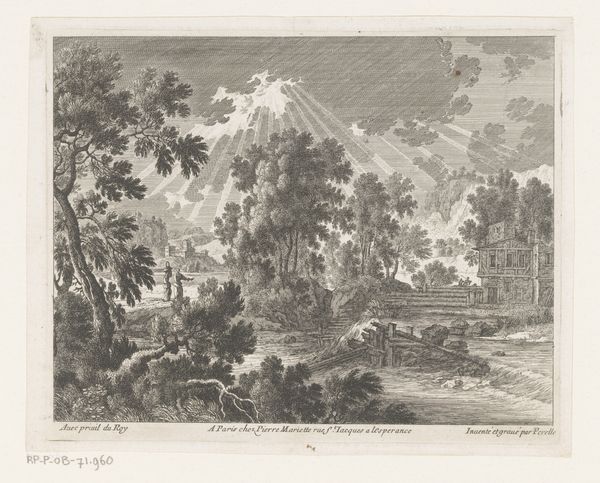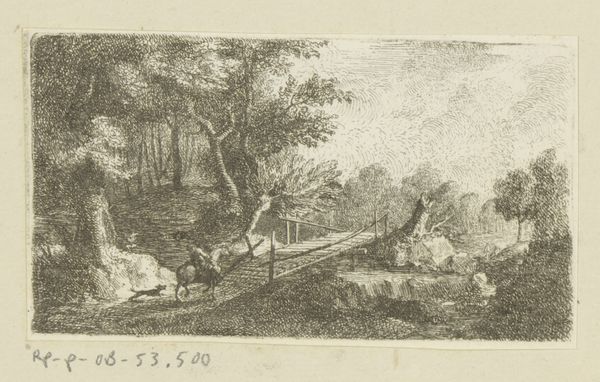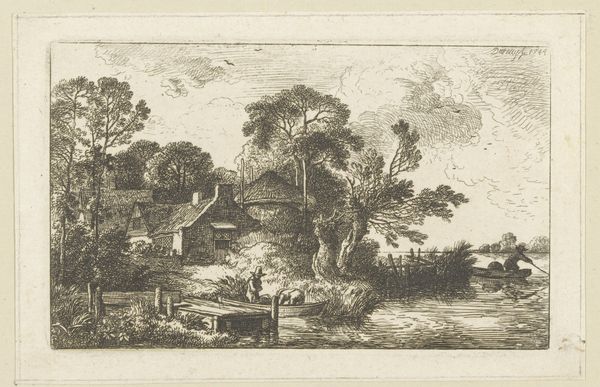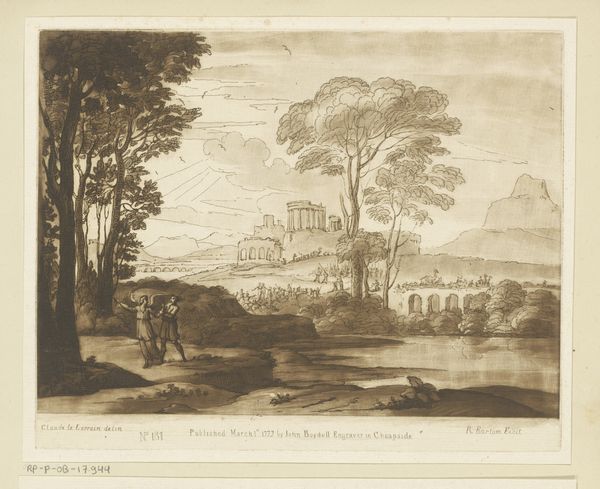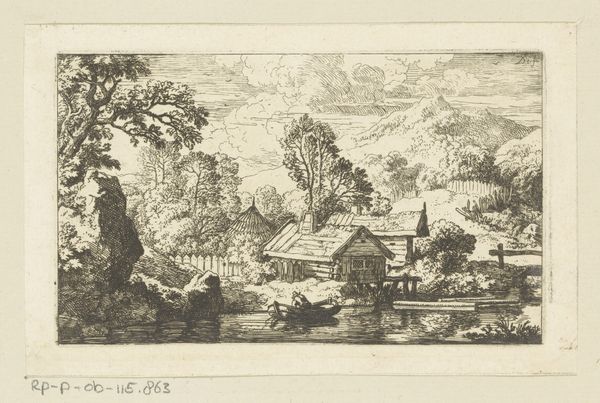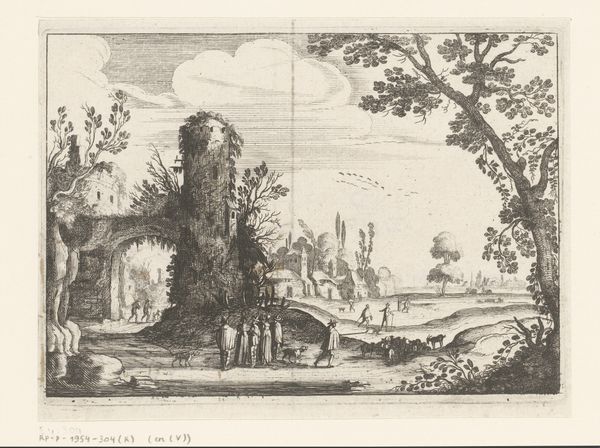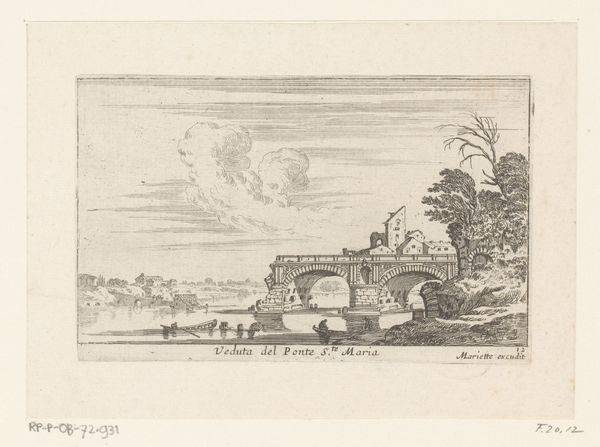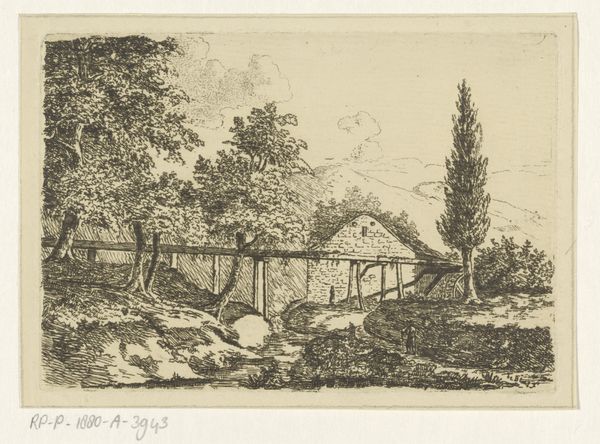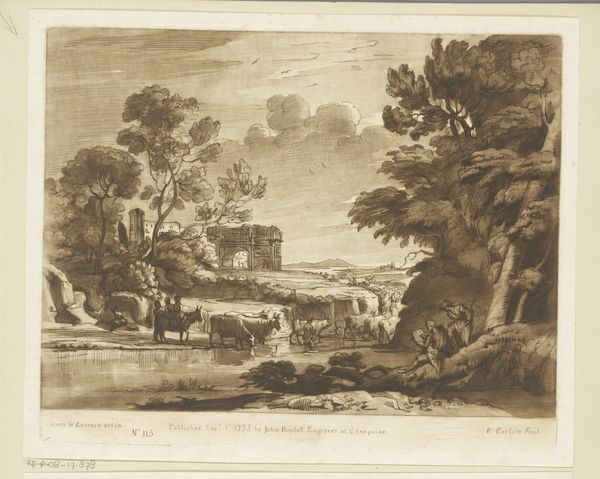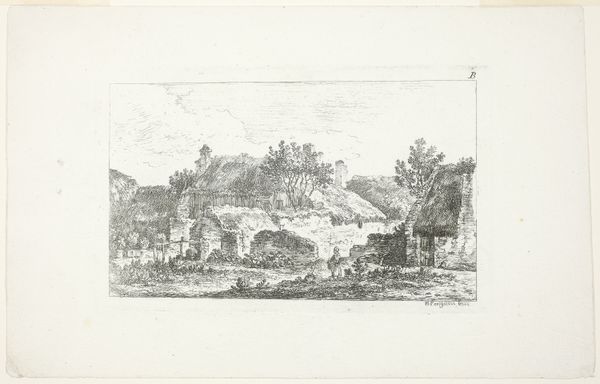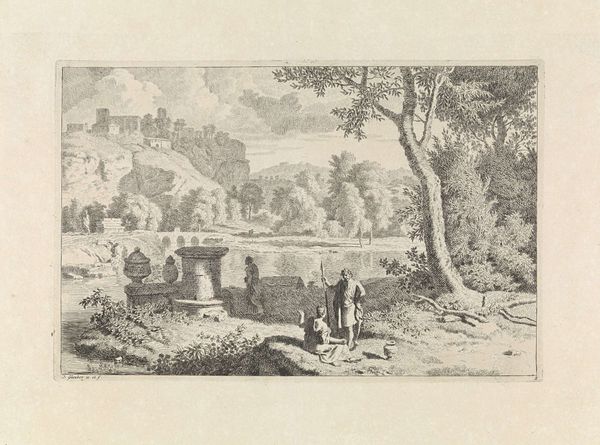
print, etching
#
baroque
# print
#
etching
#
old engraving style
#
landscape
#
river
Dimensions: height 83 mm, width 138 mm
Copyright: Rijks Museum: Open Domain
Curator: So, here we have Christian Wilhelm Ernst Dietrich's "Landscape with Watermill by the River," an etching from 1742 currently residing at the Rijksmuseum. It's a prime example of Baroque landscape art. Editor: You know, even in monochrome, I get a real sense of warmth from this. There’s a kind of quiet, pastoral bliss radiating from that little watermill. Curator: Absolutely. Note how Dietrich uses tightly controlled hatching and cross-hatching to build up the tonal range. The textural contrasts between the foliage, the water, and the rough stone of the mill are quite compelling. Consider how that complex layering invites the viewer's gaze to linger. Editor: I'm almost feeling the urge to grab a fishing rod and waste a summer afternoon by that river. There is some skillful rendering that is true, and you can see every twig. But it's the overall effect, not the detail that draws me in. Almost like a hazy memory of some place I knew long ago. It is peaceful in my memory. Curator: A productive response. But can we decode the composition? The bridge on the left, balanced against the mass of the watermill on the right creates an asymmetric equilibrium. Notice that the negative space within the architecture of the mill gives a focal point, further reinforcing this tension. The semiotic construction serves to structure the pictorial space. Editor: Well, if you put it that way… It’s funny, isn't it, how something so structured and controlled can still feel so natural, so spontaneous? The mind loves order, but I have always leaned more toward the natural wonder. Is art even real to anyone when it is completely without that sense of "discovery?" Curator: The artistry of Dietrich resides in his meticulous technique to mimic nature; this "realness" is not happenstance. Every stroke has intent to conform with Baroque aesthetic principles which emphasize symmetry, order, and clear narrative structure. These conventions aim not to simply replicate reality but to elevate it to convey moral and symbolic meaning. Editor: Right, right, but it also feels, on some level, like a stage set, or an illustration in some forgotten fable. Regardless, the image sticks, and the details emerge even more each time I give it another look. Thanks for pointing that out. Curator: My pleasure. This exploration reminds us of the profound layers of meaning and skill embedded within the deceptively simple imagery of the etching.
Comments
No comments
Be the first to comment and join the conversation on the ultimate creative platform.
